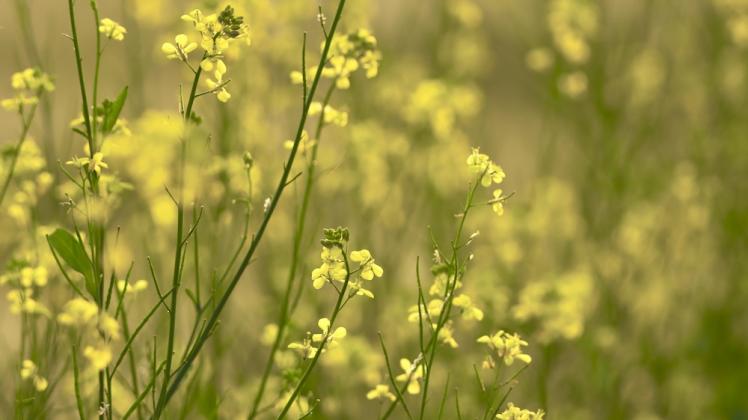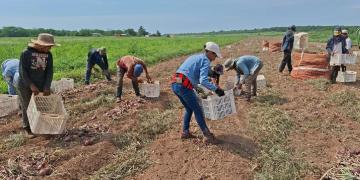Canada: Potato growers have another option against verticillium wilt
Registration of a new mustard hybrid could also help combat nematodes.

In the past few years, growers in the horticulture sector have had to cope with government deregistration of several active ingredients, leaving many to try different measures and concepts to deal with challenges of diseases and insect pests. Now comes word of a return to yesterday, of sorts, employing a newly registered male sterile mustard hybrid as a biofumigant.
The history of mustard as a biofumigant dates back to the years before the rise of many of the chemical products growers began using. Now that some of those are being phased out, researchers and private-sector stakeholders are working to find solutions to deal with diseases such as verticillium wilt and certain species of nematodes. It’s an important search given the potential devastation the disease can inflict on potato fields, although past experiences with mustard as a biofumigant have resulted in frustration due to inconsistent efficacy.
Yet the impact of planting potatoes into soil infected with verticillium wilt is equally frustrating with losses of up to half of a crop.
Rick Mitzel believes there’s an answer for potato producers: AAC Guard, known previously by its experimental designation of MSH85 –is a male sterile mustard hybrid, which has proved to be effective against verticillium wilt.
AAC Guard was registered last November and although seed supplies are limited for the 2024 growing season, Mitzel assures growers they’ll have sufficient supply for 2025.
“We have some available for the first year,” says Mitzel, one of the chief executive officers with Mustard 21 Canada, a non-profit corporation that’s based in Saskatoon, Sask. The company works collaboratively with AAFC, the Canadian Mustard Association and the Saskatchewan Mustard Development Corporation. “We planted some seed on speculation and we were pretty sure we’d get the registration. We’re definitely going to spread it around and get it to the potato growers this year. After that, producing seed isn’t that difficult.”
He’s sold some seed to potato growers in Manitoba and has sold mustard seed to growers as far east as Prince Edward Island, so the interest is definitely there.
Researchers at Manitoba Crop Diversification Centre (MCDC), the Manitoba Horticulture Productivity Enhancement Centre (MHPEC) and Agriculture and Agri-Food Canada (AAFC) – Charlottetown have been studying the effects of mustard in potato production. Some are examining the effects of different varieties or hybrids, others have been looking into mustard’s impact on insect pests like wireworm.
The key to success
The chemical found in mustard that makes it an ideal biofumigant is glucosinolate. When it comes in contact with water and certain plant cell enzymes, it’s transformed into isothiocyanate, which has the ability to control verticillium wilt in potatoes, as well as fusarium, sclerotinia, rhizoctonia, pythium and some nematode species. Research conducted in the Maritimes indicates mustard is also effective against common scab and wireworm.
According to Mitzel, farmers let the mustard get to the flowering stage, when the plant has a high level of glucosinolates, then work the plants into the soil, providing bio-control activity of verticillium wilt in potatoes.
“Obviously the more plant mass and matter, the more glucosinolates you have, the better it is for biofumigation,” he says.
“When we developed the hybrid line of brown mustard, we found it was yielding about 20 per cent more mustard but it was also creating about 20 per cent more biomass. That’s what gives you the advantage for using it in potato crops for biofumigation.”
In his experience with potato growers in Manitoba, Mitzel learned that they seed their potatoes in Year One, harvest them as usual in August-September, then go back in and seed a fall rye crop. They let that get established, over-winter and then harvest the crop – usually in July of Year Two – and seed the mustard right after. The plants would emerge with growers working it into the ground just before flowering by mid-September.
This is where the need for a male sterile hybrid is important since it won’t produce seed that can become a volunteer weed in the future. According to Dr. Bifang Cheng, a research scientist with AAFC-Saskatoon, the process of breeding a male sterile hybrid was relatively simple. She was working on the development of condiment mustard hybrids using a hybrid from the Brassica juncea Ogura cytoplasmic male sterility (CMS) hybrid system.
“The male sterile hybrid (which became AAC Guard) was produced by using an available B. juncea male sterile line with a conventional mustard line,” says Cheng, adding there are no transgenics or genome editing tools used. “The male sterile hybrid is a product of conventional breeding.”
To the future
The development of a market for mustard as a biofumigant is one more example of science, industry and growers searching for bio-based solutions to some of the issues facing agriculture, in general. The use of mustard as a biofumigant parallels the practice of planting cereal rye as a weed suppressant, and Mitzel agrees it’s part of a trend.
“There seems to be more of an interest in this biological approach and it does get us off the merry-go-round of the development of resistance,” he says. “One of the other advantages of Guard is that it comes out of the ground really quick, often within three weeks, so you get ground-cover really quick. And that helps with weed control and wind and soil erosion.”
The weed control component is especially attractive since mustard can out-compete some of the smaller weed species in a field.
Fuente: https://www.manitobacooperator.ca/crops/potato-growers-have-another-option-against-verticillium-wilt/




